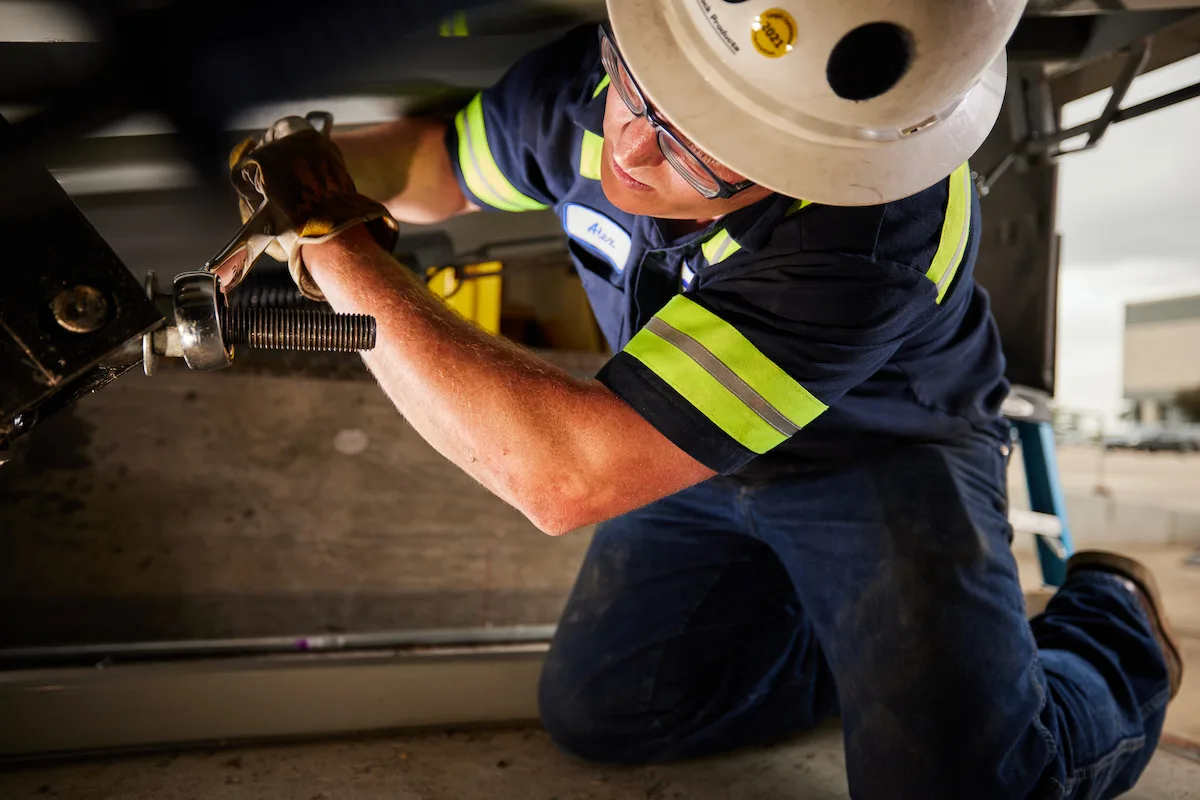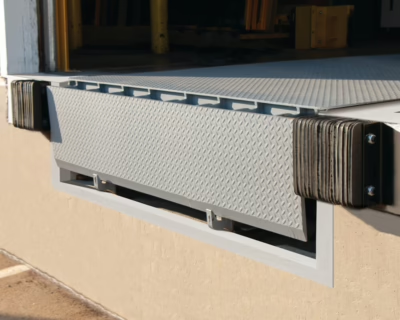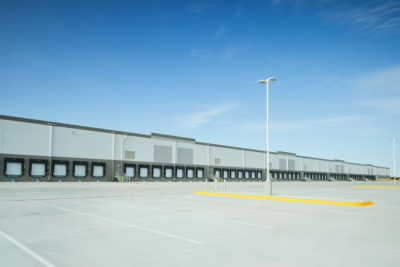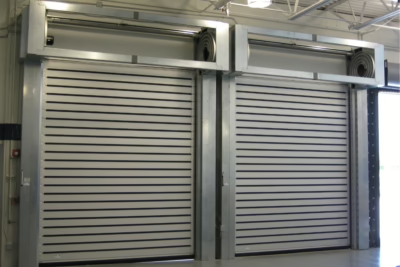Choosing the right dock leveler is a key decision that directly impacts loading dock efficiency, employee safety, and long-term operational costs. With multiple types, sizes, and configurations available, selecting the right one for your facility depends on a clear understanding of your operational needs and dock conditions.
This guide breaks down the main types of dock levelers, critical buying considerations, and strategies to ensure you choose the right equipment for long-term performance.
Assessing Your Facility’s Needs
Before reviewing equipment options, it’s important to evaluate how your loading dock operates on a day-to-day basis. Your dock leveler should complement — not slow down — your existing workflows.
Load Capacity Requirements
The first consideration is how much weight your dock leveler must support. This includes:
- The weight of your heaviest forklift
- The maximum weight of palletized or crated materials
- The frequency of fully loaded vehicles
Tip: Always choose a leveler rated 25–30% above your expected maximum load to allow for safety margins and future growth.
Traffic Volume and Frequency
A facility operating 2–3 shifts per day will place much higher stress on dock equipment than a warehouse with occasional shipments. High-frequency docks benefit from faster, low-maintenance systems that can keep up with demand.
- Low-volume facilities: Mechanical levelers may be sufficient.
- High-volume operations: Hydraulic or air-powered levelers are more reliable and reduce operator strain.
Type of Vehicles Serviced
Different vehicle types have varying bed heights and configurations:
- Standard box trucks
- Refrigerated trailers (with recessed beds)
- Lowboy trailers
- Step decks or liftgate-equipped vehicles
You’ll need a leveler with enough vertical travel to bridge the gap between the dock and the truck — both above and below dock height.
Understanding the Main Types of Dock Levelers
Each dock leveler type has its own advantages, drawbacks, and ideal applications. Here’s how to evaluate them:
Mechanical Dock Levelers
Operation: Spring-loaded and operated manually via pull chains.
Best for: Low-traffic facilities, or those with budget limitations.
Pros:
- Lower upfront cost
- Simple to install
Cons:
- Requires more physical effort
- Higher long-term maintenance due to springs and linkages
Consider this if you’re in a light-use facility with occasional truck traffic and want a straightforward solution.
Hydraulic Dock Levelers
Operation: Uses hydraulic cylinders and push-button activation to raise and lower the platform and lip.
Best for: High-traffic environments, heavy loads, or facilities prioritizing safety.
Pros:
- Minimal manual labor
- Faster cycle times
- Less wear on internal components
Cons:
- Higher upfront investment
Consider this if you need dependable performance across multiple shifts or operate in a fast-paced logistics environment.
Air-Powered Dock Levelers
Operation: Inflatable air bladder lifts the platform; operated via a button.
Best for: Moderate to high-traffic areas, especially where cleanliness is a concern.
Pros:
- Fewer moving parts than mechanical units
- Easier to clean and maintain than hydraulics
- Energy-efficient
Cons:
- Slightly slower than hydraulic units
- Less ideal in cold climates if not properly insulated
Consider this if you operate in a food-grade or regulated facility that requires frequent wash-downs or minimal contamination risk.
Edge-of-Dock (EOD) Levelers
Operation: Mounts directly to the dock face; limited vertical travel.
Best for: Light use with minimal trailer height variation.
Pros:
- Compact footprint
- Low cost and quick installation
Cons:
- Limited flexibility
- Less smooth transition than pit-style levelers
Consider this if space is limited and your fleet has uniform trailer heights.
Key Specification Considerations
Platform Size
Standard dock leveler widths are 6 to 7 feet, with platforms typically 6 to 10 feet long. Longer platforms are needed for steeper inclines or when servicing lower trailers.
Tip: If your operation involves below-dock loading or wide material loads, opt for a 7-foot-wide platform.
Lip Length and Projection
The lip of the leveler bridges the dock to the trailer. A standard lip is 16 inches, projecting 12 inches beyond the bumpers. For recessed trailers or unusual dock configurations, longer lips may be needed.
Operating Environment
If your dock is exposed to harsh conditions (cold weather, washdown areas, or dusty environments), the leveler you choose must be built for it.
- Cold storage: Use insulated levelers and perimeter seals
- Washdown areas: Air-powered or stainless steel hydraulic units
- Dusty/dirty settings: Look for protected cylinders and sealed controls
Optional Features to Enhance Performance
To maximize uptime and safety, consider adding the following:
- Integrated vehicle restraints: Prevent trailer creep and early departure accidents
- Weather seals and brush guards: Improve energy efficiency and pest control
- Maintenance support legs: Ensure safety during inspections and servicing
- Smart controls: Integrate levelers with dock doors, sensors, and access systems for improved communication
Real-World Example: Choosing the Wrong Leveler Costs More
A regional food distributor outfitted their new facility with mechanical dock levelers to reduce upfront cost. Within two years, operators reported slow cycle times, high maintenance needs, and increasing safety complaints. After analysis, the facility replaced half the units with hydraulic levelers and saw:
- 30% reduction in turnaround time
- 80% fewer maintenance service calls
- Increased employee satisfaction
Lesson: Short-term savings can lead to long-term operational inefficiencies.
FAQs
Are wheel chocks a reliable safety solution?
With proper maintenance, most levelers last 10–20 years depending on type. Hydraulic units generally outlast mechanical ones.
Can I upgrade an existing pit for a new leveler?
Yes — many manufacturers offer retrofit options that fit into standard pits. A professional site assessment will determine compatibility.
Are dock levelers customizable?
Absolutely. From custom lip lengths and wider platforms to special coatings and insulation, dock levelers can be tailored to meet your facility’s unique demands.
Final Thoughts
The right dock leveler isn’t just a piece of equipment — it’s a critical component of safe, efficient, and reliable loading operations. By understanding your facility’s needs, traffic patterns, vehicle types, and environmental conditions, you can confidently choose the leveler that supports your long-term goals.
DuraServ provides turnkey loading dock solutions — from consultation and installation to service and maintenance. Contact our team today to schedule a facility assessment and find the best dock leveler for your operation.



